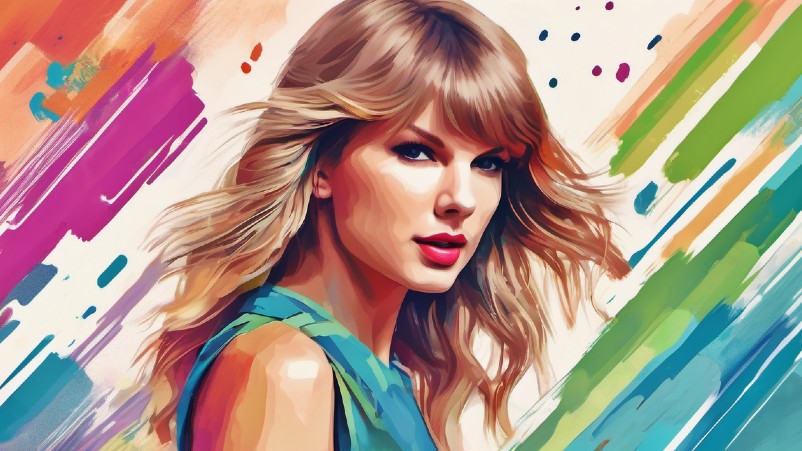Taylor Swift effect: How the Tay Tay train drew a young, affluent crowd in its wake, spend spiked across Sydney and Melbourne; brands, retail, leisure mopped-up – Commbank iQ

Young, cashed up and ready to party, the legion of Swifties who poured into the Sydney and Melbourne CBDs for the artist's recent concert series lifted spending by 4 per cent and 6 per cent respectively in each city. And those figures are conservative, says the Commbank iQ executive who ran the analysis. Here's where the money went.
What you need to know:
- They came, they saw, they shopped. Swifties lifted spending across Sydney and Melbourne by almost $60 million according to an analysis by Commbank iQ. Melbourne was up 6 per cent and Sydney 4 per cent.
- The impact was likely even greater as Wade Tubman and the team at Commbank IQ only considered the concert days, rather than the full halo effect from concertgoers who made a weekend of it. And given a third came from interstate, that was likely a sizeable chunk.
- Given they were younger, and more affluent than the general population some spending categories, especially accommodation and entertainment made out like bandits – Visit Victoria told Mi3 in January that hotel occupancy rates for the Swift weekend were already north of 80 per cent.
- But there were likely other winners as well, as the characteristics of the crowd suggested a predilection for cosmetics and beauty, activewear, specialty stationery, and both affordable and luxury fashion.
If you look at Melbourne or Sydney, these are big cities, there's a lot of people and a lot of things going on. To move the dial in that way, that is substantial.
The best day
This year's first big cultural moment, a series of concerts by Taylor Swift in Melbourne and Sydney boosted spending across the cities by almost $60 million.
And those figures are conservative, as they don't include things like airfares or ticket sales says Wade Tubman, head of innovation and analytics for Commbank iQ – the data analytics joint venture with Quantium that runs the numbers on transaction data from circa 7 million banking customers.
According to its analysis Melbourne experienced a spending uplift of about 6 per cent and Sydney about 4 per cent during the concert periods alone. "If you look at Melbourne or Sydney, these are big cities, there's a lot of people and a lot of things going on. To move the dial in that way, that is substantial," said Tubman.
The actual impact is likely higher than the trends revealed in the report, because Tubman and his team took a conservative approach with their analysis, focusing only on the concert days themselves.
"We know from this work and other work that especially when you're traveling from Interstate, you're not going there for a day, you're probably going there for the weekend, you might even go there for four or five days. But to be as robust as we can, we have limited this spending to just those on the concert day. You can imagine this figure being double that or more because of the other halo activities around it."
He told Mi3, "We've been quite conservative in this analysis in terms of attributing spend. We haven't included the concert tickets. So over and above this, they bought tickets there and some of that stays in the country. Some of that obviously, helps fund the production."
But the real lift is in the typical tourist drivers such as accommodation, hospitality, and other attractions and events especially where interstate customers were concerned.

That is perhaps not surprising. As we reported recently the four Sydney concerts drew 320,000 people, while Melbourne attracted 288,000.
The Commbank iQ report on the event found that in Sydney, an extra $13.7m more than usual was spent, representing a 117 per cent uplift. Of that, locals contributed $4.5m of the uplift, and visitors $9.2m. On average, event attendees spent $104 each in this category, locals at $85 and visitors at $121. It was a similar story in Melbourne which experienced a 116 per cent uplift ($12.7m).
Both cities also benefited from an influx of interstate visitors, which Tubman says was the first thing that struck him when he did the analysis – with a third of the crowds in both cases having crossed the border for the big night.
And it was good news for marketers since those visitors, and attendees more generally were younger and significantly more affluent than the general population.
In figures that will warm the cockles of otherwise cost-of-living constrained beauty, fashion, style, and specialty stationery retailers that army of Swifties was:
- Twice as likely to shop in cosmetics and beauty stores, with 81 per cent having done so in the past 12 months.
- Twice as likely to shop in activewear stores, with 55 per cent having done so in the past 12 months.
- Three times more likely to shop for specialty stationery.
- Five times more likely than average to shop affordable fast fashion women’s brands, while other Swifties prefer luxury boutiques with 10 per cent having shopped luxury in the past 12 months, which makes them three times more likely to do so than average.
There's always a lot of spending going on in big cities, so the Swifties maintained the base amount of spending and then some, said Tubman. "Sydney has a big tourist vibe. Melbourne, probably even more so. So the Taylor Swift team took all of that, and then $56 million on top of that."



